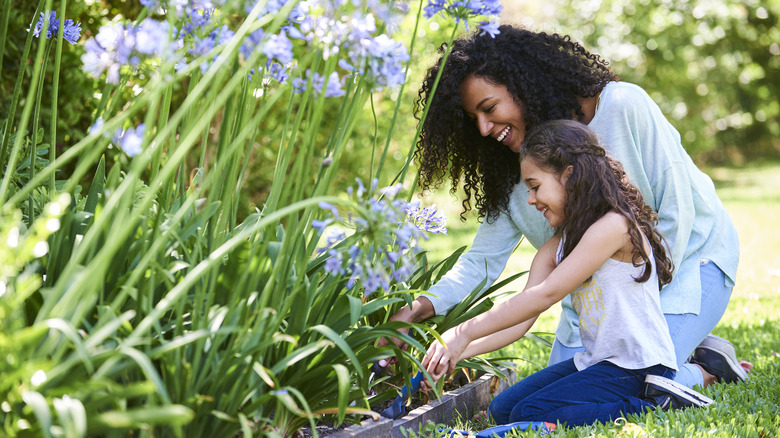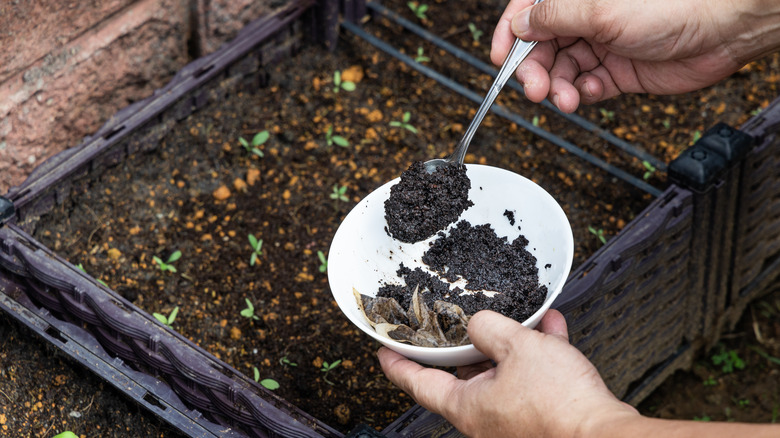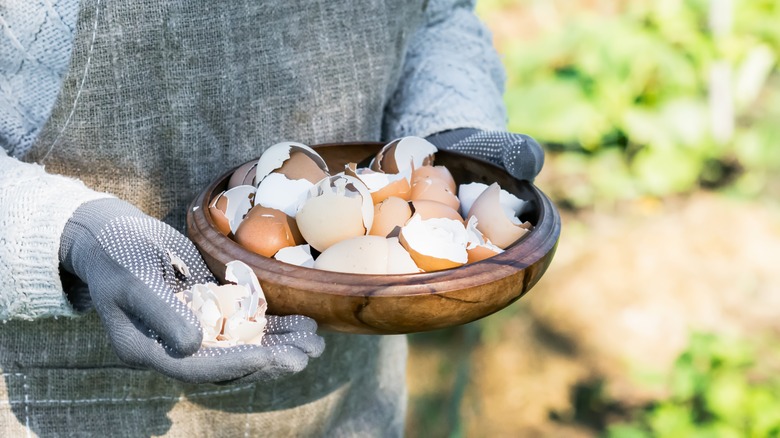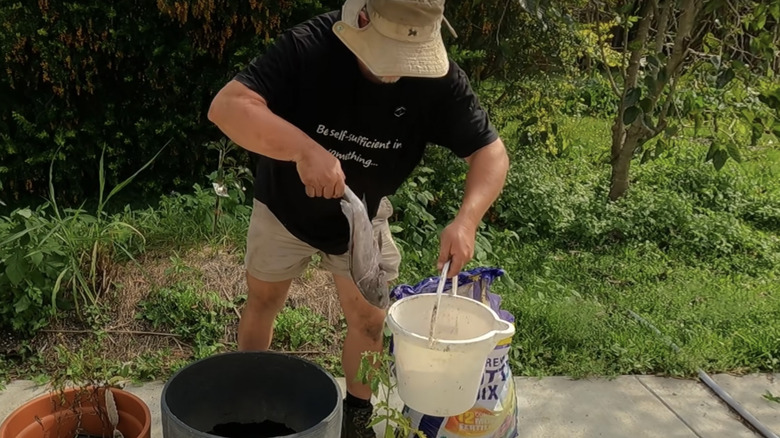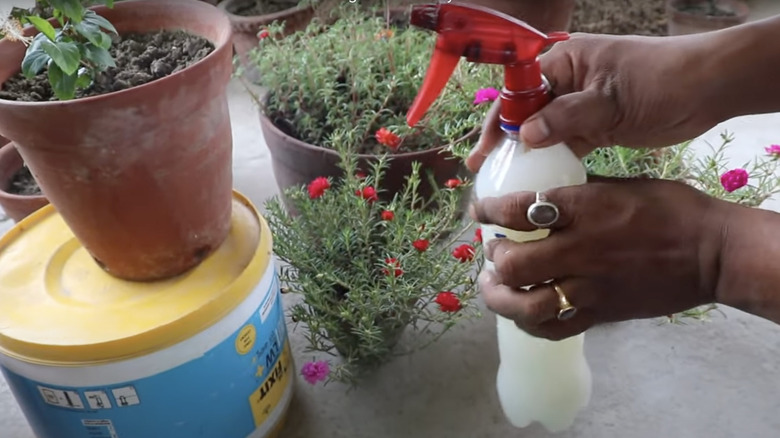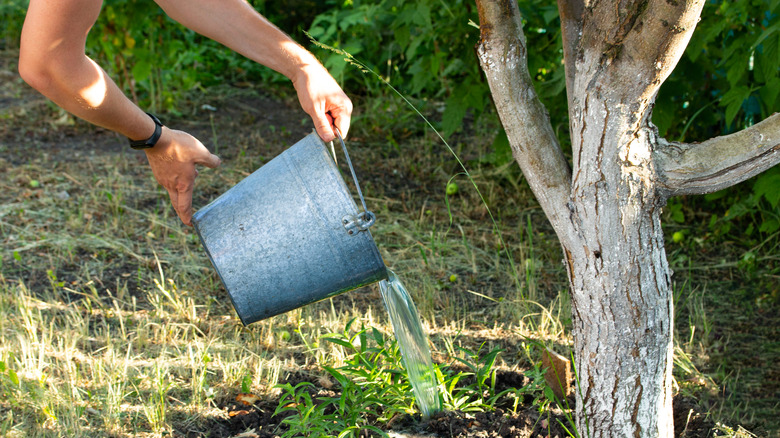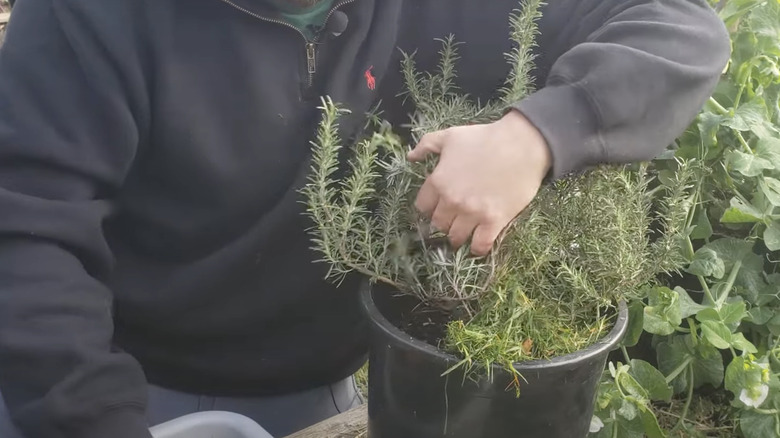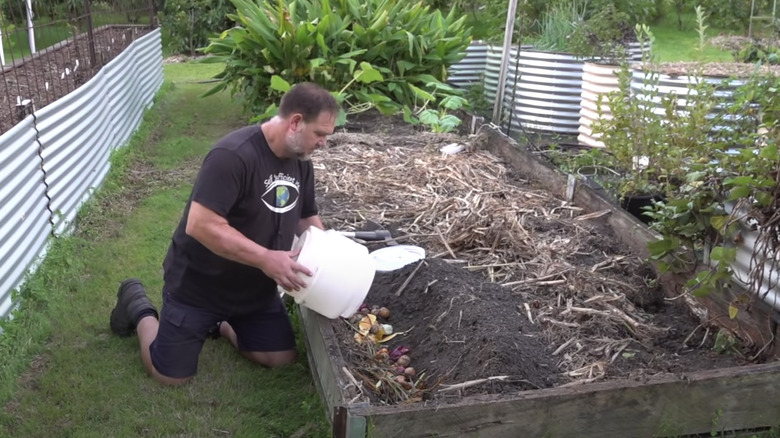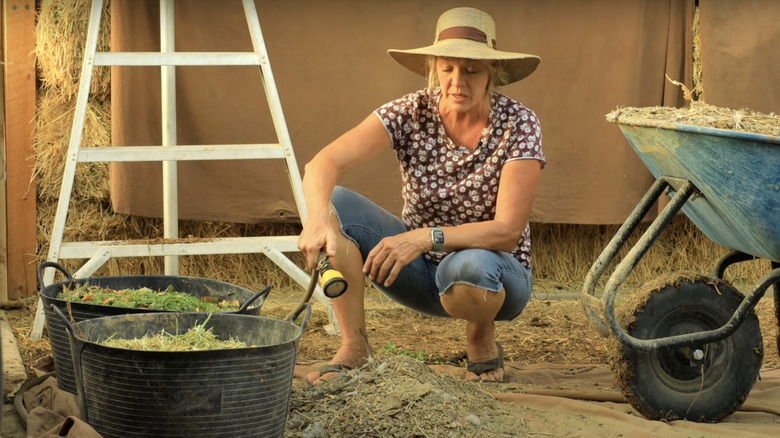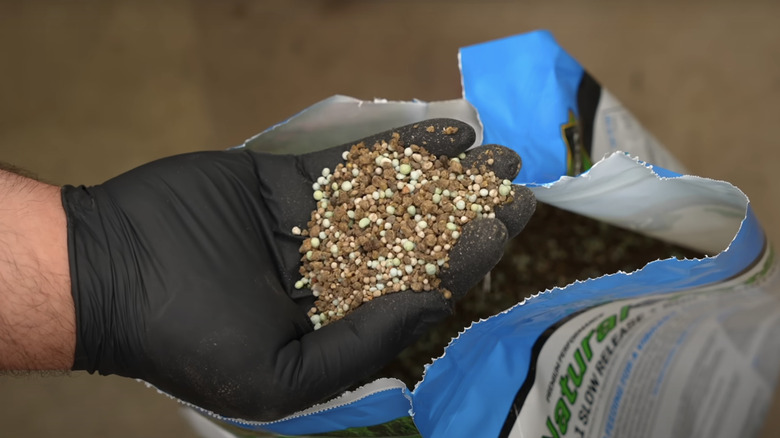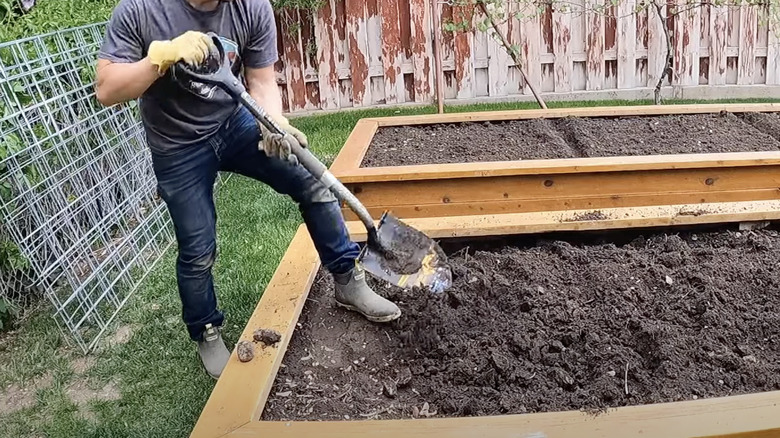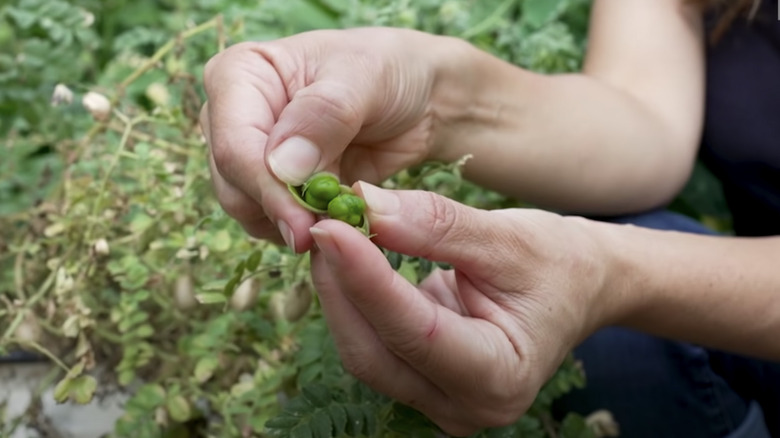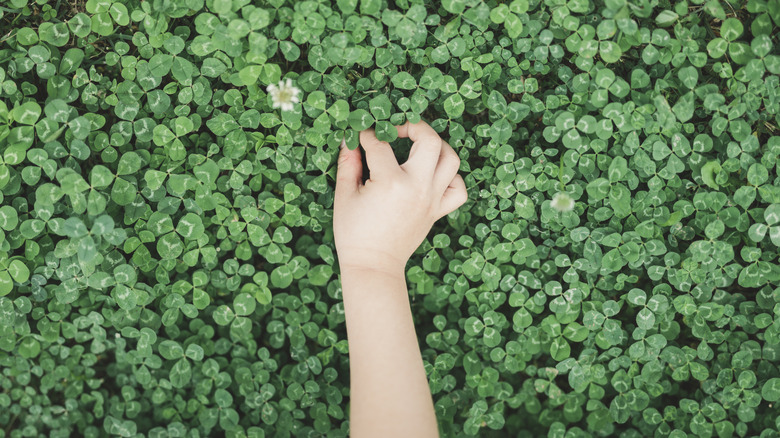12 Ways To Add Nitrogen To Your Soil For A Healthier Garden In No Time
Recent findings in agricultural history hint that people have been growing plants for almost 23,000 years. Despite how long we have been gardening, we still have much to learn, and at the end of the day it all comes down to a science. You must provide the right conditions and nutrients for plants to flourish, grow, and produce food or flowers. One of the most important nutrients plants need is nitrogen, which is essential for them to photosynthesize and blossom throughout their lives. To provide nitrogen for your plants, you must establish a nitrogen presence in the soil.
You can do this through direct and indirect methods that have immediate or staggered results. Depending on your chosen strategy, the results can last a few weeks or become self-sustaining, having years-long impacts. Learn more below about how you can improve the nitrogen presence in your soil, ensuring you build a thriving garden to be proud of.
Mix coffee grounds in your soil
Ground coffee beans are good for more than just brewing a strong cup of java. Mix the leftover remains from your morning brew in your soil for a boost of nutrients. When making the dirt and coffee combination, don't make the layer of beans more than a 1/2-inch thick since too much makes it more difficult for the soil to dry after rain and watering sessions. You can also add it to your compost pile, and you can use a hefty amount of grounds to where they make up about 20% of your garden compost.
Coffee contains various minerals that nourish plant life, including calcium, iron, potassium, and nitrogen, and it also absorbs heavy metals that may be present in your soil. Oregon State University has released studies revealing coffee has a neutral pH level (around 6.5 to 6.8), which is coincidentally the same as what soil pH levels should read at. This combination of factors makes it highly beneficial for any plants rooted in the ground beans.
The one thing you should keep in mind is that the residual caffeine may inhibit plant growth. According to Intechopen's peer-reviewed study on plants and caffeine, the stimulant thwarts cell division in plants. This can slow their ability to grow and reproduce over time, which is something to keep in mind if you plan to expand your garden or propagate from your personal nursery.
Add broken egg shells to your dirt
Coffee grounds aren't the only leftovers with nitrogen content, and broken eggshells also release this element into your soil. Seeing as they contain calcium, magnesium, and nitrogen, multiple minerals are imbued into the ground when you mix shells with the dirt. They are also useful as an innovative mulch, helping plants retain water and deter weeds.
It's possible to apply eggshells in your garden as both a dry or liquid fertilizer. For the liquid method, soak 1 cup of clean shells in a gallon jar of water for about a month before using the mixture to water your plants. To measure out for the dry method, crush about four or five eggshells per plant and sprinkle the crumbled residue over those you wish to fertilize. Uncrushed shells can take years to decompose fully and release nutrients into the soil. This makes egg them an ineffective process short-term unless you grind them up fully, which causes them to deteriorate faster.
You should also avoid using rotten, expired eggs unless you plan to mix them deep within your soil. Rotten eggs release a foul smell that diminishes your garden aesthetic and attracts scavenging pests. However, cooking the shells before use makes them easier to grind up and reduces the putrid scent.
Grind up fish to feed your soil
Fish scraps are the holy grail of food waste when it comes to plants. They contain all three primary nutrients that greenery needs to thrive: nitrogen, phosphorous, and potassium. In fact, these underwater creatures are so effective as fertilizers, you can purchase fish meal, emulsions, and hydrolysate at gardening shops. These are processed products that maximize their effect on soil.
You can use fish scraps by simply burying them deep within your soil. If you want to create your own fish emulsions, you can blend 1 part fish with 3 parts sawdust, coupled with a bottle of unsulfured molasses. Stir the homemade solution once a day for about two weeks, then strain it and pour it over your garden as a homemade liquid fertilizer. Remember to dilute it with 1 gallon of water per tablespoon of mixture to ensure you don't overdo it.
Make sure you bury these scraps at least 12 inches deep within the ground or place them in a secure, fenced-in garden. Dead fish give off a strong odor that attracts wildlife and neighborhood pets to your door. If you don't follow the above advice, animals will likely dig up your aquatic-based fertilizer and any plants caught in the carnage.
Directly pour powdered or liquid milk around your plants
Using milk to tend to plants is an old farmer's trick. Although some plant aficionados don't see the appeal, many others swear by this gardening hack. Milk's most prominent claim to fame is its calcium content, but it also contains one of the three most vital minerals — nitrogen.
Creating milk-based fertilizer is easy. Mix an equal ratio of liquid or powdered milk to water, and apply the concoction to your garden. You can either pour it around the base of your plants or use a spray bottle to mist the leaves. In addition to fertilizing, milk deters pests and serves as an antifungal agent, making it effective in repelling infestations and diseases.
There are some tips to make your milk-fertilizer experience complication-free. You should use reduced-fat milk since a higher fat content has a stronger odor that most homeowners don't appreciate. Like with all fertilizers, be careful not to overdo it. The excess calcium and nitrogen can cause gardens to wilt and rot from an overabundance of minerals.
Dump old fish tank water in your garden
If you look beyond the contents of your fridge, other household "leftovers" will serve your plants well. Fish owners who take a look at their tanks and honestly say they clean them regularly can reuse the old water. Instead of dumping the old water down the drain, pour it into a bucket or watering can for saturating plants. Aquarium water contains nitrogen, meaning you can use it to both water and nourish plant life.
Since a relatively clean aquarium shouldn't be teeming with bacteria and algae, the water won't contain that many minerals. Keeping this in mind, you may want to reserve old tank water for indoor gardens, where the demand for nutrients isn't as high. Since indoor plants get less sun and tend to grow less rapidly, their nitrogen needs are lower. Fish tank water can help them meet those needs without overdoing it like more concentrated fertilizers on the market.
There are some key pieces of advice to keep in mind when using tank water. Avoid using water that's been chemically altered to meet certain pH levels, as there are likely residual traces of these chemicals still present in the water. When used to hydrate plants, it could effectively alter the pH of your soil to unhealthy levels. If you have a saltwater tank, you should also refrain from this fertilizer hack since the salt content will literally dehydrate and poison your plants.
Try the eco-friendly grasscycling method
The only thing better than store-bought recycled products is using self-made recycled products. If you have an outdoor garden, you likely also have a lawn. The next time you mow, don't gather and dispose of grass trimmings the traditional way. Instead of tossing them in your dumpster, repurpose them as compost for your garden.
Grass clippings are primarily composed of water and mineral compounds. These properties break down quickly, supplying plants with both moisture and nitrogen, making it a great ingredient in compost. Keep in mind that grass clippings should be one of many ingredients in compost. Make sure also to add dried yard waste, such as dead leaves and sticks from trees and bushes. The even ratio of dry and wet materials limits bacterial activity, minimizing the risk of bacteria-caused fungi and diseases forming on your plants. As an additional benefit, dry pieces will also keep your compost from smelling too foul.
Use food waste for a nutrient boost
While coffee, eggs, and milk independently give gardens an excellent nitrogen boost, there are other foods you can combine for a similar effect. According to Recycled Track Systems, almost 22% of solid waste in landfills is wasted food. Instead of contributing to that statistic, try repurposing appropriate foods into a rich homemade compost. Vegetable peels, fruit cores, stale bread, grains, spices, and the aforementioned old coffee grounds make a great mixture that adds nitrogen and other minerals to your soil.
When creating the agglomeration of food, make sure you follow the previous advice of keeping a balance of wet and dry ingredients. This ensures your compost isn't too moist or dry, both of which can do more harm than good. Too many wet ingredients brew an environment ripe for bacteria and pest infestations, while excess dry ingredients turn your compost into mulch. Of course, many plants benefit from a layer of mulch, but unintentional mulching can lead to a similar host of problems caused by excess wet ingredients.
Try to stick to the above-listed ingredients. Avoid meat products and pet and human waste, which make compost offensively smelly. Also, keep artificially made junk, such as plastic bags, glass bottles, and aluminum cans, out of your compost pile. These products take hundreds to thousands of years to break down, making them ineffective as a nutrient source for your garden (at least in this lifetime). On that note, only glass has no long-term effects on the soil. Both plastic and aluminum have detrimental long-term results, which should convince you to keep them out of your garden.
Recycle farm animal manure as fertilizer
Many local and family-owned farms use eco-conscious methods to minimize waste and maximize harvests. Their experimentation with different techniques has led to the discovery of one of the best ways to add nitrogen to your garden and property. This strategy utilizes animal manure. Livestock manure is so full of nitrogen and phosphates it's creating an environmental hazard for United States waterways. When it rains on commercial livestock, the runoff from their manure seeps into nearby bodies of water, making them undrinkable and overpopulated with algae.
Instead of letting the manure nutrients overwhelm our landfills and waterways, they serve a much better purpose being recycled as plant food. If you own a farm or have any farm animals, you're in luck. Various farm animal species provide a boost of nitrogen for soil, and the top options are waste from goats, rabbits, and chickens. You can also use cow or horse manure, but they contain very little nitrogen comparatively.
The simplest way to use this method is to directly spread fresh manure on a primed and ready garden bed that is currently absent of plants. Let the waste settle for a season before you plant anything, giving it time to break down so it won't be as strong. If you want to use the manure immediately, combine it with equal parts water before pouring the mixture around your plants.
Use a store-bought, nitrogen-rich fertilizer
Although innovative methods are more satisfying and brag-worthy, you shouldn't disregard the ease and practicality of purchasing a nitrogen-rich fertilizer. You can find fertilizers with high nitrogen ratios by looking for liquid jugs or bags with a high first number. All fertilizers list their content ratio of the three main nutrients plants need, and nitrogen is the first one on the list.
It's recommended that you use a soil test kit before deciding on a fertilizer to determine how much of the other nutrients you need too. Options with the highest nitrogen content usually contain hoof and horn meal, feather meal, or blood meal. Bat guano, cottonseed meal, soybean meal, fish emulsions, and neem seed meals are also great picks.
Liquid bottles tend to be fast-release, while bags of granules are usually slow-release. Fast-release options need to be re-applied more often, while slow-release choices only need to be applied once or twice per season. Always read the product label before you apply the formula to your garden. Liquid fertilizers contain concentrated minerals and usually need to be significantly diluted before you pour them over your plants.
While shopping for high-nitrogen fertilizers, you should lean towards natural and organic options over any synthetic products. Although synthetic products, like liquid fertilizers, are effective, they are too powerful for the natural environment. According to Heriloom Soul, copper sulfate is a common ingredient in these products, and it kills soil microbes that are necessary for self-sustaining healthy soil. It eliminates all fungi and bacteria, including the "good" ones, ultimately destroying your yard's ability to thrive in the long run.
Stop excessive tilling of the soil
If you raise fruits and vegetables and plan to keep your garden alive and well for years to come, you've likely heard of tilling. This term refers to the common practice of soil aeration, where gardeners rake their soil to prepare it for the next growing season. This practice is typically done in kitchen gardens after fruits, vegetables, and herbs have been harvested, and the land is being prepared for new seedlings.
No matter what tools you use, tilling breaks up the clumps of organic material in your soil. It's meant to aerate it, allowing air and moisture to germinate seeds and encourage root growth. However, there is a downside to this practice. The clumps of organic material are better at retaining important nutrients, such as nitrogen. By breaking up the soil, the dirt granules lose their nutritional value. This makes it harder for plants to prosper and yield produce. That's why some gardeners prefer to embrace a no-till method.
However, if you don't want to go that route, Dr. Denise Finney, an Associate Professor of Biology, recommends adding high-nitrogen fertilizer or compost mixtures to your soil as you go to reduce nutrient loss (via George Weigel). In addition to that, many gardeners swear by annual tilling, only turning their soil in the spring to keep from overdoing it. Do what's best for your garden.
Plant grain legumes and beans in vegetable gardens
Colorado State University released an informative guide stating that veggie-bearing plants require at least 40 parts per million (ppm) of nitrogen at the start of the season. This number must be maintained throughout the planting, growing, and harvesting stages, meaning you should do what you can to ensure nitrogen remains present in the soil. One tactical approach for tackling this issue is to plant nitrogen-fixing plants among your other crops.
Plant grain legumes, such as chickpeas, lentils, peas, and soybeans, as cover crops among your other choice vegetables. These plants host healthy bacteria that absorb atmospheric nitrogen and convert it into ammonia, which plants extract nitrates from. The trick is that you cannot collect the grain legumes' harvest — most of the nitrogen is contained within their produce. Over time, their veggies should fall and decompose in the soil, naturally supplying nitrogen to your garden.
Plant perennial and forage legumes in ornamental gardens
Many people don't grow their own food and simply own gardens for aesthetic purposes. In these situations, grain legumes aren't good companions for flowers and ferns from a stylistic standpoint. Luckily, other cover crops mesh well with ornamental gardens while also supplying nitrogen to the soil. Look for perennial and forage legumes, such as alfalfa and clover species, which are known for their vibrant flowers and uniquely shaped leaves. These plants are in the legume family but are more befitting for a floral display.
They are considered "nitrogen-fixing" because they supply up to hundreds of pounds of nitrogen per acre and operate similarly to grain legumes. Like the rest of their plant family, alfalfa and clovers' nitrogen-boosting abilities don't kick in immediately. Give them time to grow and flower, mostly leaving them alone, so they produce nitrogen for other plants in your garden.
